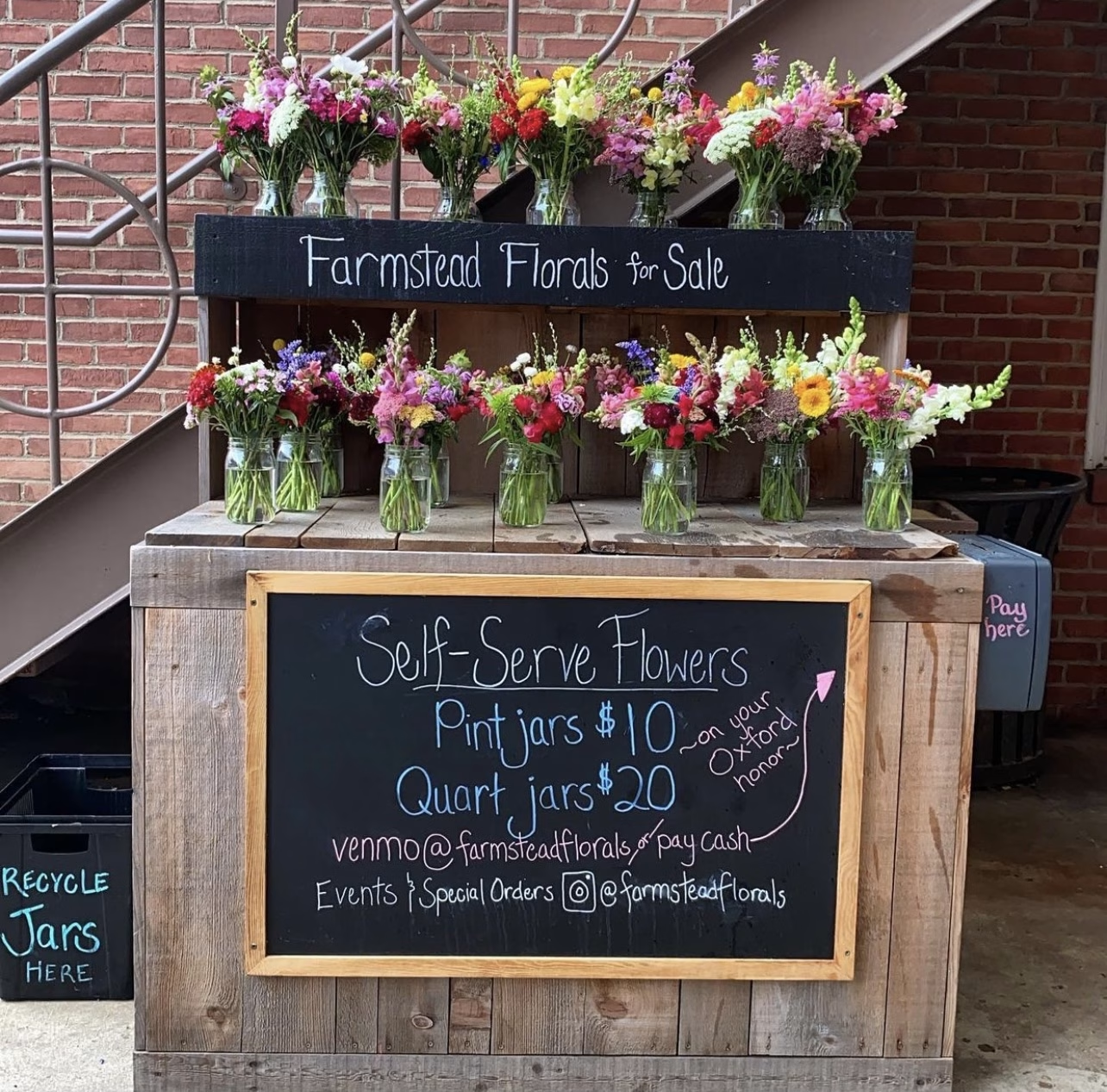By Ainsleigh Cunningham
Journalism Student
The Farmstead Floral Farm has been providing Oxford and other regional markets with fresh florals for six seasons now. The Farmstead sits on a 128-acre farm just on the northeast outskirts of Oxford on County Road 2086.
The farm has a ton to offer not only Oxford locals, but tourists as well. On the land, there are cottages that guests can stay in that overlook the lake and the flower farm. There is also a barn where events like weddings, corporate events and more can be hosted.
Maddie Dyess has worked as a farmhand for one season and has had quite the experience with the florals.
“We start pretty early to beat the heat of the middle of the day,” said Dyess. “We get organized in the morning, fill buckets and then head out to the fields to cut flowers.”
Some of the favorite blooms from the farm are zinnias, ageratum and celosia. The flowers bring lots of color to every arrangement.
There is much more that goes into farming on the flower farm besides cutting flowers. At Farmstead Florals, they craft their floral arrangements for distribution around town.
“We supply arrangements at Chaney’s, Chicory Market and the self-serve stand on the Square. Our self-serve stand is probably the most well-known place to find our flowers,” Dyess said. “People put their money in a cash box or Venmo ‘on their Oxford honor’ and take a bouquet to go with them. Our stand can be found right outside of Uptown Coffee on the Square. You can also catch us at the Tuesday and Saturday farmers markets in Oxford.”
The florals from the farm are also found in places other than just Oxford. The florals make their way around the Mid-South, with their largest deliveries going to Memphis and Birmingham, Alabama.
Farmstead Florals are most well known for producing beautiful zinnias, and you can find these brightly colored petals in almost all arrangements.
Other than just strictly growing and cutting the flowers on the farm, there is a much more detailed process that goes into the beautiful arrangements.
“Depending on the type of flower, we will either use seeds or plant a transplant. There is a lot of work that is done to the dirt like laying plastic to keep the weeds out on the rows before we get plants in the ground. We irrigate by using drip lines and then just watch and wait for the plants to grow,” Dyess said. “We want to make sure we consistently weed to make sure the flowers do not get choked out or die and also pinch the flowers to encourage basal branching. Basil branching is cutting the flower down so it produces more than one bloom. Once the flowers are ready to be cut we go out, cut, and strip the flowers. We place them in buckets and take him to the pool room to either be made into arrangements or go out on the roads to go to a florist.”
Porter Wells has also worked as a farmhand for one season of florals.
“I find working outside and with plants to be incredibly rewarding, especially after self-isolating most of last year,” Wells said. “There’s something wonderful about watching the plants grow from a tiny nursery plug, barely an inch tall, into gorgeous flowering bushes within the space of a few months. And then using the blooms in arrangements that you know will bring a smile to someone’s face is the cherry on top.”

